Top 5 AI Voice Dubbers to Dub Video in Different Languages
- Ratings and Rankings Overview: Which One to Check
- Feature Comparison Table of the 5 Best AI Voice Dubbers
- Complete Review of the 5 Best AI Voice Dubber Tools
- Use Case Recommendations: When to Use Voice Dubber
- FAQs: Voice Dubber Tools
Ratings and Rankings Overview: Which One to Check
Before diving into detailed comparisons of this post’s five best voice dubber tools, it’s important to understand how each tool performs overall. They are rated based on functionality, dubbing quality, ease of use, pricing, and reliability to give you a clear picture of how each platform stands out. Disclaimer: Ratings are based on aggregated reviews, product testing, and real-world creator feedback.
| 5 Voice Dubber Tools | Overall Rating | Highlight | Key Limitation |
| RecCloud | Very Good (4.5/5) | Balanced all-in-one dubbing and translation tool | Basic lip-sync for complex motion |
| Rask AI | Very Good (4.3/5) | Accurate voice cloning and multilingual output | Expensive for small creators |
| Synthesia | Good (4.2/5) | Ideal for professional video presentations | Limited voice control on lower plans |
| HeyGen | Fair (4.0/5) | Fast dubbing for social media creators | Less detailed voice adjustments |
| Papercup | Fair (3.9/5) | Studio-quality voice production | High cost and slower turnaround |
Rating Summary:
⭐ 4.5/5 — RecCloud: Best all-in-one dubbing and translation solution for creators.
⭐ 4.3/5 — Rask AI: Ideal for agencies needing multilingual voice cloning.
⭐ 4.2/5 — Synthesia: Best for corporate training and business videos.
⭐ 4.0/5 — HeyGen: Great for fast dubbing of social content.
⭐ 3.9/5 — Papercup: Perfect for professional broadcasters and studios.
Feature Comparison Table of the 5 Best AI Voice Dubbers
Beyond the ratings and rankings, this post also includes a comparison table of the 5 best voice dubber tools. Here, you’ll find a detailed breakdown of the core features of today’s top AI voice dubbers to help you quickly spot which platform fits your needs best. Check out the table below to see how each tool performs in language support, dubbing quality, editing flexibility, and pricing options.
| Feature / Category | RecCloud | Rask AI | Synthesia | HeyGen | Papercup |
| Language Support | 70+ | 130+ | 140+ | 175+ | 40+ (premium) |
| Accuracy / Quality | 4.5/5 | 4.3/5 | 4.2/5 | 4.0/5 | 3.9/5 |
| Voice Generation / Cloning | AI voices with tone control | Advanced voice cloning | Realistic voices with avatars | Varied AI voices | Hybrid AI + human |
| Lip-Sync Accuracy | Basic, effective for most videos | Strong, near-professional | Excellent in avatar-based scenes | Moderate | Broadcast-grade |
| Built-in Editing Tools | Yes (subtitles, timing, option to remove old subtitles) | Yes | Yes | Yes | Limited |
| Ease of Use | ⭐⭐⭐⭐⭐ | ⭐⭐⭐ | ⭐⭐⭐⭐ | ⭐⭐⭐⭐ | ⭐⭐ |
| Free Plan | ✅ Free trial available (paid version starts at $4/month) | ✅ Free trial available (paid version starts at $60/month) | ✅ Free plan available (paid version starts at $18/month) | ✅ Free plan available (paid version starts at $29/month) | ❌ Paid version starts at $30/month |
| Best For | Creators, educators, marketers | Agencies, enterprises | Business and corporate videos | Social content creators | Broadcasters, studios |
Complete Review of the 5 Best AI Voice Dubber Tools
Now that you have explored the ratings, rankings, and comparison table, is there a voice dubber tool that you think suits your preferences and meets your needs? If you think it’s still too early to answer that question and want to learn more about each tool’s capabilities, advantages, and disadvantages, then continue reading this section!
1. RecCloud – A Balanced All-in-One Dubber for Everyday Creators
If you’re looking for a voice dubber tool that combines voice dubbing, subtitle creation, and translation in one online platform, then RecCloud’s Free Online AI Video Translator is exactly what you need. As mentioned, this dubbing tool combines automatic speech-to-text, subtitle generation, translation, and AI voiceover in one platform. You can upload your video or audio, and it will transcribe it, translate it into your target language, and generate a dubbed voice version in several tones that sound nearly identical to the original.
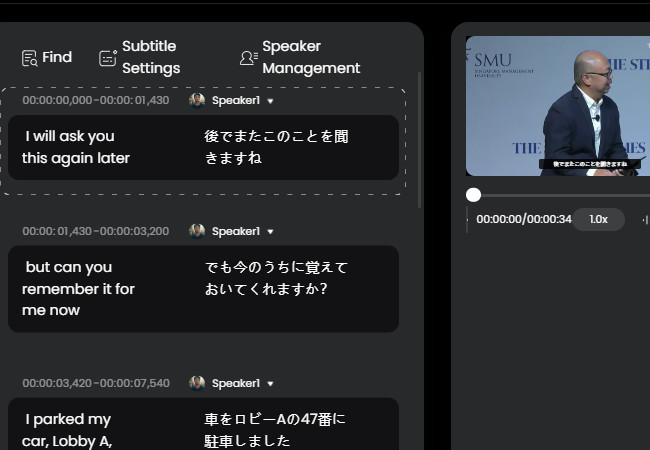
Key Features:
- Provides you option to remove old subtitles, identify speakers from the video or audio, and choose and edit natural-sounding AI voices’ volume.
- Allows you to adjust the generated subtitles’ timestamps for timing refinement.
- Enable you to tweak the generated subtitles’ appearance, position, size, etc.
- Supports a preview where you can watch the video with dubbed and translated voice.
Pros:
- Straightforward workflow, no steep learning curve.
- Affordable with a free tier.
- Offers highly accurate translations for voiceover and subtitles.
- Ideal for moderate-volume video projects.
- Combines dubbing and translation in one place.
Cons:
- Limited fine-tuning for advanced users.
Best For:
- Creators, educators, and marketers who want a reliable all-in-one dubbing workflow.
Trust Signal:
- Trusted by thousands of content creators and other users worldwide.
- Updated October 2025
2. Rask AI – Reliable for Professional Localization
Another amazing online voice dubber you can try is Rask AI. Similar to the first tool, this one lets you upload videos or dub YouTube videos directly via a link. It preserves the original voice’s tone and emotion, along with background music, effects, and multiple speakers, generating each voice separately for interviews or dialogues. You can choose from over 33 target languages and select a tone for the voice.
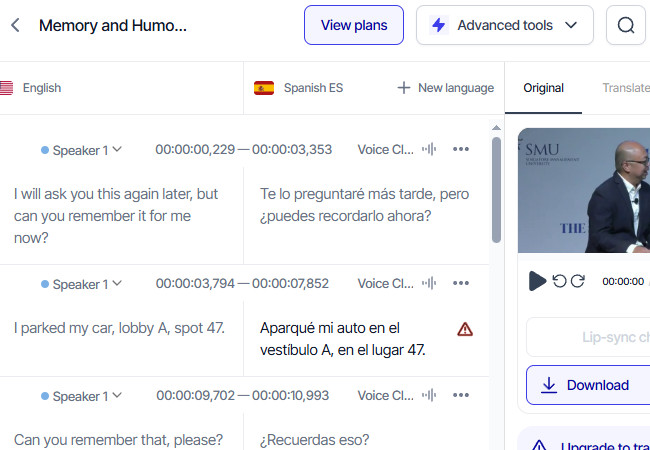
Key Features:
- Offers realistic voice cloning to maintain tone consistency during translation.
- Produces natural-sounding results without the typical learning curve.
- Clone the speaker’s original voice from the video and use it in the translated version.
- Allows you to edit the generated subtitles in both the original and translated versions.
Advantage:
- Intuitive user interface.
- Support translating multiple speakers.
- High-quality dubbed voice output.
- Accurate voice cloning for translation.
- Allows you to choose a tone for the translated voice.
Disadvantage:
- The free version only lets you translate a voice with a maximum of 10MB.
- Less control over fine-tuned timing or voice nuance.
Best For:
- Agencies and enterprises need scalable, multilingual dubbing.
Trust Signal:
- Used by localization teams and professional creators worldwide.
- Updated October 2025
3. Synthesia – Ideal for Corporate and Training Videos
You shouldn’t miss the chance to try Synthesia, as it is also one of the best voice dubber tools. Like the tools above, this one lets you upload a video, translate it into various languages, and replace the spoken parts with AI-generated voices while keeping the original speaker’s tone. What sets it apart is its perfectly aligned lip-sync and the ability to edit transcripts for more natural dubbing. Additionally, Synthesia’s “multilingual video player” lets viewers switch between language versions using the same link, without managing multiple files.
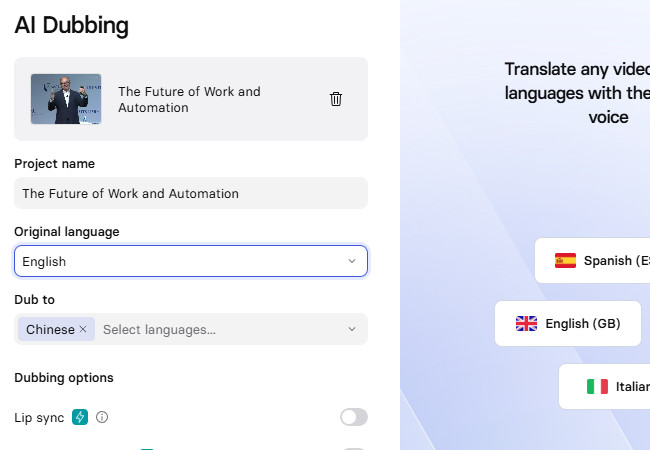
Key Features:
- Supports a multilingual video player that lets you toggle between languages.
- Allows you to edit the transcript before dubbing to correct translation errors.
- Translate multiple speakers in a video, so more than one person’s voice can be translated and dubbed.
Advantage:
- Easy to use with an intuitive user interface.
- Lip-sync is well handled.
- Ability to edit the transcript to avoid errors.
- Works well with dialogues or interviews without blending voices.
Disadvantage:
- Some of its advanced customizations require higher or paid plans.
- Alignment or clarity may occasionally have minor mismatches.
Best For:
- Businesses producing training or corporate communication videos.
Trust Signal:
- Trusted by 90% of the Fortune 100 from G2
- Updated October 2025.
4. HeyGen – Fast and Simple for Social Media Creators
If you’re looking for an online voice dubber that offers clear and natural dubbed translation output, you should try HeyGen. This tool makes video dubbing effortless by automatically translating spoken content into different languages while keeping the original speaker’s lip movements and emotions intact. Its AI voices sound clear and natural, capturing the tone and pacing of each scene. You can tweak translations, adjust timing, or generate matching subtitles in both languages for a professionally localized video.
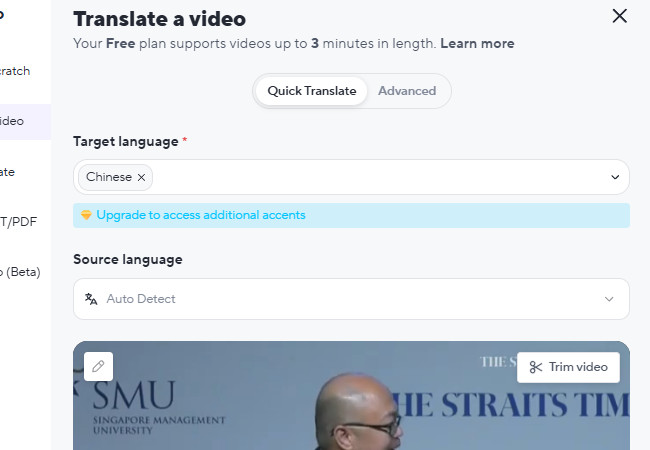
Key Features:
- Offers a large variety of AI voices (male/female) so you can match tone and style.
- Generates subtitles automatically in both source and target languages.
- Syncs dubbed voice with visual lip movements or facial expressions.
- Allows input either via uploading video/audio or typing a script (text-to-speech).
Advantage:
- Beginner-friendly tool.
- Many voice or accent options let you match the feel of your content.
- Automatic subtitles save time and help reach wider audiences.
- Voice dubbing feels more natural because of good lip-sync and facial animation.
Disadvantage:
- Advanced editing options are not available under its basic version.
- AI voices don’t fully replicate nuanced emotional delivery.
Best For:
- Social-media creators and influencers need a rapid dubbing turnaround.
Trust Signal:
- Used by digital storytellers and influencers worldwide
- Updated October 2025.
5. Papercup – High-End Audio for Broadcast Use
Otherwise, if you are searching for a voice dubber tool that offers a broadcast-quality output, then you should pick Papercup (RWS). Papercup via RWS offers AI voice dubbing and voice-over services that combine synthetic voices with human adjustments for natural, broadcast-quality audio. It translates spoken dialogue into new languages, matching the original tone, pacing, and emotion while preserving background music, effects, and video-sync.
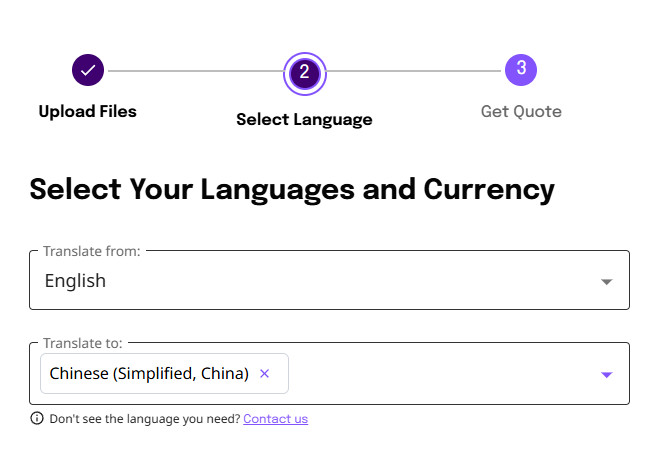
Key Features:
- Voice dubbing and voiceover with human refinement for broadcast-quality output.
- Maintains background music and sound effects, replacing only the spoken dialogue.
- End-to-end localization: translation, subtitling, dubbing, and post-production workflows.
- Support for tone, pacing, and emotional consistency in dubbed voices.
Advantage:
- Produces professional-quality dubbed videos that sound natural and well-timed.
- More affordable than hiring human voice actors for every language.
- Helps reach global audiences without losing the original video’s quality.
Disadvantage:
- You need to contact them for pricing; there’s no free plan or public rate.
- It can take longer since humans still review the AI’s work.
- Not ideal for quick personal projects or small edits.
Best For:
- Broadcasters and documentary producers need studio-level dubbing.
Trust Signal:
- Trusted by major media networks for multilingual releases.
- Updated October 2025.
Use Case Recommendations: When to Use Voice Dubber
There you go! Those are in-depth reviews of this post’s five best voice dubber tools. Now, check the use case recommendations to see which one fits your needs best and start creating videos with clear, natural-sounding dubbed voices.
| Scenario | Recommended Tool | Why |
| YouTube, e-learning, and small business videos | RecCloud | Simplified workflow combining dubbing and translation |
| Professional localization and enterprise projects | Rask AI | High-quality cloning and batch processing |
| Corporate marketing and training materials | Synthesia | Avatar-led dubbing is ideal for professional use |
| Social media and short-form content | HeyGen | Fast, accessible, and suited for creators |
| Documentaries and broadcast productions | Papercup | Studio-grade audio and manual QA precision |
FAQs: Voice Dubber Tools
1. What is an AI voice dubber?
An AI voice dubber automatically translates a video’s spoken audio into another language. It also recreates the voice with natural tone, pacing, and lip-sync accuracy.
2. Which AI voice dubber offers the best lip-sync accuracy?
Synthesia and Rask AI are known for their precise lip-sync performance. They make dialogues and on-camera videos look naturally dubbed.
3. Are there any free AI voice dubbing tools?
Yes, both RecCloud and HeyGen provide free versions and trials that you can try. They’re great for testing or light dubbing projects.
4. Which voice dubber supports the most languages?
HeyGen currently supports over 175 languages and accents. It’s the best choice for reaching a global audience.
Conclusion
After exploring this post, is there a voice dubber tool from the list that you wish to try and use to translate and dub a specific video or audio? Whether you’re creating YouTube videos, training materials, or multilingual marketing content, these AI voice dubber tools can save hours. For most creators, RecCloud offers the best mix of affordability and accuracy, while Rask AI and Synthesia excel in professional localization. Try your favorite tool and start reaching global audiences effortlessly today.






Leave a Comment